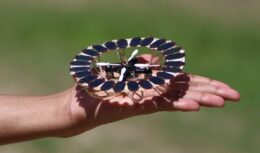
New solar panel manufactured in Brazil promises to revolutionize the photovoltaic market. Sunew's new solar panel can be installed on cars, houses and even buildings.
The solar energy market is constantly looking for ways to generate photovoltaic energy through panels that combine design, sustainability and cost reduction, thus offering an optimized solution for electricity generation. Thinking about that, the Brazilian company Sunew is developing a new solar panel manufactured in Brazil, using an innovative and advantageous technology known as OPV (Organic Photovoltaic), which has the potential to revolutionize the market.
The organic solar panel, which is composed of organic solar cells, is considered the third generation of solar cells, that is, it is at the top in technological terms.
A new solar panel manufactured in Brazil is produced in a completely different way compared to conventional solar panels, consisting of a plastic film, where carbon inks are printed, causing the plastic film to have layers, obtaining electrons on the top, having a positive charge on the top and a negative charge on the bottom.
The new solar panel manufactured in Brazil offers several benefits, as it is a plastic film that uses extremely flexible, transparent and low-cost carbon-based paints. Its lightness can also contribute to the easy transportation of the product and its composition also facilitates its recycling, increasing its expected use.
O new solar panel from Sunew, a company located in Minas Gerais, brings diverse applications in various situations. Among them is architecture, as the film can be used to cover building facades or roofs in a simpler way compared to conventional solar panels.
The product can also be installed in cars, cell phone charging equipment, bus stops and much more.
Companies already use new solar panels manufactured in Brazil
The manufacturing of this new technology, in addition to being much faster than conventional technology, can also promote a reduction in environmental impact. The leading company in the production of these panels, called Sunew, is making several investments in the production of these panels.ainéis in the national market, focusing on the expansion of this photovoltaic film.
Some examples of the application of technology are a bus station in Curitiba. The company also entered into partnerships with large companies such as PepsiCo, CAOA, Natura and carried out many more initiatives in the country.

Sunew highlights that its technology makes the possibility of a new era of distributed generation a reality, generating a new alternative for solar energy generation for cities, buildings and vehicles.
The manufacturing process of this new solar panel manufactured in Brazil benefits from the use of low temperatures that require small amounts of energy, especially when compared to other photovoltaic technologies, resulting in a low carbon footprint.
PepsiCo installs new solar panel on its fleet of trucks
A PepsiCo, one of the largest food and beverage companies in the world, has advanced its ESG agenda with a focus on the distribution of its products. The company has just announced the implementation of more than 400 trucks with its trunks. More than 250 of these trucks have organic photovoltaic film (OPV) solar panels, which guarantee the reduction of greenhouse gas (GHG) emissions.
The initiative is in line with the company's goals, which foresee the reduction of greenhouse gas emissions globally by 40% by 2030.
Through the partnership with Sunew, PepsiCo guarantees an operational improvement in its fleet, with increased productivity considering that electrical and low load problems generated hours of truck downtime.











